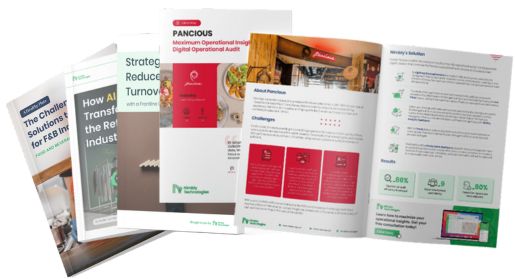

Risk assessment for a manufacturing business is complicated and requires accuracy. Understand its important facts and how to digitally hack the process.
All proper workplaces and industries have risk assessment as an inseparable part of their SOP. In general, risk assessment refers to the combined efforts in identifying and analyzing levels of risk factors and hazards before finding mitigation efforts. Manufacturing fields are especially risky because of the levels of hazards workers and environments face. Therefore, companies must put the best efforts into maintaining and even improving these efforts.
Manufacturing business involves activities that pose multiple risk factors and hazards. Canadian Centre for Occupational Health and Safety requires each company to incorporate several aspects in risk assessment. They are:

What are typical hazards and risk factors present at the workplace? Make the list of hazard types specific to that workplace, such as physical, electrical, chemical, safety, ergonomic, and psychosocial.

Hazard likelihood helps you create the hierarchies of risk management, useful in composing priorities and important steps in facing various scenarios. It must include standard and non-standard causes, such as human error, weather, emergencies, natural disasters, power outages, and maintenance.

Risk assessment requires a standard in measurement to describe the likelihood or unlikelihood of hazards. You can use a severity-based matrix (Slight, Serious, Major) or probability-based (Highly Unlikely, Likely, Highly Likely). However, this matrix is standard, and you can develop your own based on the company’s needs.

Hazard identification is used to create thorough solutions for each problem. The solution can be the total elimination of hazards or the risk management steps to reduce the likelihood of accidents, injuries, and damages.
The documentation of risk assessment consists of all types of official records, notes, reports, and testing results. They must contain all the important details, such as assessment methods, evaluations, official hazard counts and their reports, conclusions, and proposed methods. They are important materials for improvement and risk management processes.
When conducting an assessment, all the activities must cover the important elements: manpower, machine, method, material, movement, and environment.
Risk assessment is a sophisticated task that presents challenges for people involved in it. Here are common challenges to expect when executing it:
Accurate hazard records are important in creating assessment and risk management methods. Inaccuracies can happen when companies do not pay attention to actual field reports or complaints. Manual recording systems can also contribute to mistakes, errors, and inaccuracies in the assessment process.
Assessment process requires partnerships between different departments for accurate results. However, poor communication can impact this process, creating divides between perspectives and even inaccurate information transfer.
Even with an existing communication system, there are still possibilities of miscommunication. This can happen in cases like differences between accident reports from on-site workers or inspectors and the managers. Miscommunication can cause misunderstanding about the severity level of certain risk factors.
Risk assessment strategy is created based on data. If a large amount of data is not processed properly, it will impact the accurate analysis and solution. Poor data management can also create an administrative mess, which will hinder the evaluation and auditing process.
One way to handle these problems is by using a digital management tool that streamlines the risk assessment process. Software like Nimbly is useful in creating an easier system to create a more detailed and accurate assessment system.
Nimbly is a digital checklist tool that provides an automated and convenient data management system. You can use its digital checklist system to create thorough task lists to finish. Everyone involved in the assessment can check and share the list, preventing miscommunication between different officers or departments.
You will no longer miss a notification about problems, accidents, or other things that require your attention. The issue tracker sends an alert system to everyone connected to the checklist system. You can adjust the list by creating a measurement standard for the software and notify the inspector or on-site officer to respond to the problem. The result is a better assessment system that measures the actual problems.
Conducting a risk assessment system for a manufacturing business is not an easy task. There are many factors to consider and information to interpret accurately. Use Nimbly as your data management tool to streamline the process and make the solution more accurate based on the company’s challenges.
